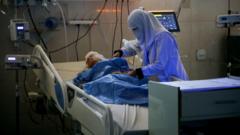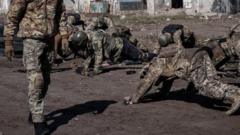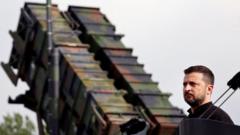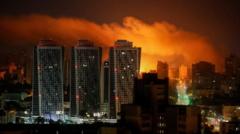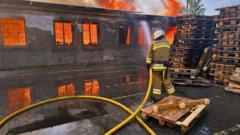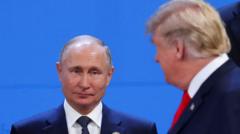Despite claiming some territorial gains in eastern Ukraine, Russian forces face fierce opposition from Ukrainian troops, resulting in heavy casualties and an overall slow advancement.**
Russia's Ongoing Military Campaign in Ukraine Faces Staggering Resistance and Slow Gains**
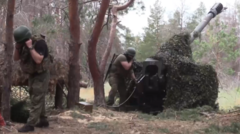
Russia's Ongoing Military Campaign in Ukraine Faces Staggering Resistance and Slow Gains**
Russian forces struggle to achieve territorial advances amidst relentless Ukrainian defense and increasing casualties.**
As Russia intensifies its military operations in Ukraine, recent reports reveal a significant escalation in drone and missile attacks, yet its ground forces are struggling to maintain momentum. In June, the Russian military claimed to have captured 556 square kilometers (approximately 215 square miles) of territory, marking its most substantial land acquisition of the year, according to data from the monitoring platform DeepState. This expansion roughly equals an area four times the size of Liverpool or the city of Chicago.
The Russian strategy appears focused on disrupting supply lines to Ukrainian forces while establishing a buffer zone within northeastern Ukraine. However, experts indicate that the progress of Russian troops remains alarmingly slow. If the current rate of advancement persists, it would take Russia over 70 years to seize the entirety of Ukraine.
Key areas of Russian offensive activity include the Sumy region to the northeast, the eastern cities of Pokrovsk and Kostyantynivka, and a newly opened front west of Pokrovsk. Recent incursions allowed Russian forces to advance approximately 10-12 kilometers into the Sumy region, but this progression has stalled, primarily due to staunch Ukrainian resistance.
Russian President Vladimir Putin's goal is to solidify a protective buffer around Russian territory following attempts by Ukrainian forces to seize swathes of Kursk last summer. While Russian forces did manage to reclaim control of some border areas with support from North Korean troops, they quickly encountered fierce skirmishes that have resulted in a constant ebb and flow of territory.
Military analysts suggest that these operations are strategically designed to stretch Ukrainian defenses, necessitating a diversion of resources along the approximately 1,200-kilometer frontline. This pressure could potentially compromise the defense of critical positions.
Pokrovsk, a strategically vital city that has resisted capture for over two years, remains a focal point for Russian military efforts. Commander Gen Oleksandr Syrskyi reports that approximately 111,000 Russian troops are concentrated in that sector. However, Ukrainian operatives anticipate Russian tactics are shifting towards a "creeping offensive," relying on smaller units to slowly deplete Ukrainian resources, albeit with significant Russian casualties of over 1,000 soldiers daily.
Control over the eastern city of Kostyantynivka remains fiercely contested as Russian forces attempt to create a "cauldron" to encircle Ukrainian defenders. Nonetheless, a breakthrough in this area seems unlikely, as Russian momentum is already faltering and previous offensives have stalled.
Further west, tactical movements in the Novopavlivske sector have enabled some territorial gains. Ukrainian military observers confirm that a recent rapid advance brought Russian units close to the Dnipropetrovsk region, although Ukrainian forces quickly negated these claims of significant territorial control.
Ukrainian armed forces have had to adapt in the face of constant drone threats attempting to sever supply lines, making logistical operations perilous. As Staff Sgt Viktor Pyasetskyi of Ukraine's 93rd brigade notes, previously reliable routes have become inaccessible due to nighttime drone strikes, complicating the delivery of essential resources such as food and ammunition while further stressing troop rotations.
As hostilities continue and civilian areas are targeted, the Ukrainian military is committed to maintaining morale in the face of overwhelming challenges posed by ongoing Russian military pressure. The conflict's long-term impacts remain uncertain as both sides struggle for dominance in a war that has reached a critical point.

